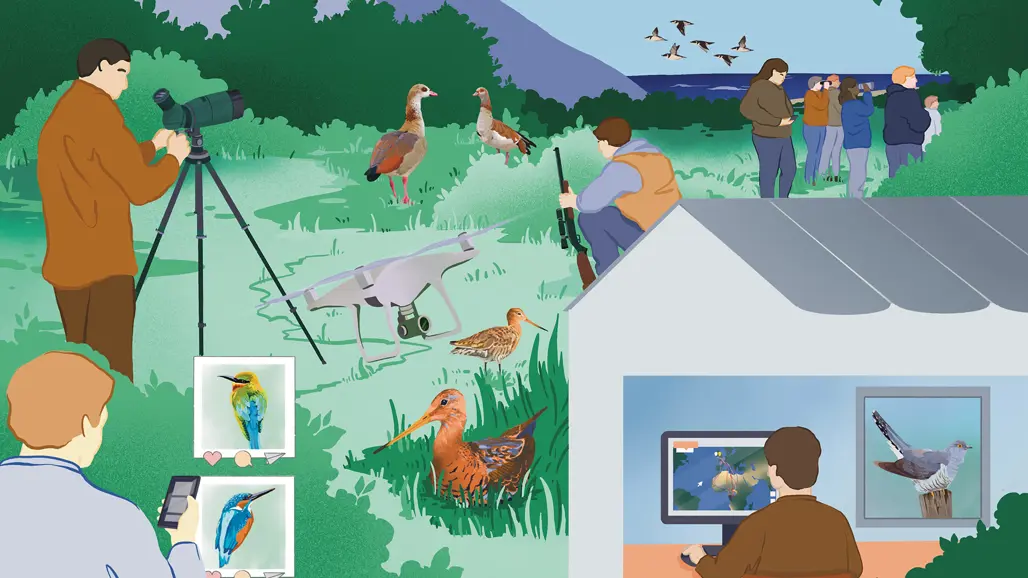
Digital tools are reshaping our relationship with birds
Apps, cameras, and social media make it easy to start birdwatching, but they also raise many questions. How do new technologies affect birdwatching itself: how it is carried out, experienced, and who takes part?
– Digital tools such as apps and cameras have made birdwatching easier, but they have also changed the very activity of birdwatching, how birdwatchers relate to one another, and how they experience nature, says Elin Lundquist, researcher at the Swedish University of Agricultural Sciences (SLU).
New technology is sometimes taken for granted – the focus is on how we can use the new tools. But technology is never neutral. It shapes how people do things. It can change society and affect nature, sometimes in unexpected ways.
Birdwatching is an excellent example. In the past, naturalists used rifles to get close to birds. But during the 20th century, binoculars took over – along with a new view of birds as something to protect rather than collect. Field guides, bird towers, and cars have also played a decisive role.
During the last decade birdwatching has embraced digital technology. Digital cameras, including those in mobile phones, make it easy to take pictures. Identification apps help users recognize birds by sight and sound. And on social media, people can get help with identification and join discussions. These developments allow more and more people to form connections with birds.
But digital developments also raise questions. These include how they affect our relationships with birds, who participates, how the information about birds that is collected is used, and how birds themselves are affected.
Another issue is equality. Who participates, and who does not? Platforms such as eBird and Artportalen show underrepresentation of women, older people, and minority groups.
– Old structures tend to persist. New technology alone is not enough to attract new groups to birdwatching. Targeted initiatives are also needed to spark wider interest, says Elin Lundquist.
A pressing issue is who owns and uses the data. In Sweden, for instance it has been unclear to users of digital platforms who can access observations of sensitive species.
And how can birds be affected?
When large amounts of data are collected, it can be used, for example, for conservation and urban planning. This can be positive for birds. But there is also a risk that some birds or places are overlooked simply because no one has registered them or visited those areas.
– There is also a risk when information about a sought-after or rare species spreads faster than ever before. Birds can become stressed when large numbers of people gather to see them, says Elin Lundquist.
There is also an environmental aspect. Data centers and the production of mobile phones contribute to carbon emissions and increased demand for resources.
This article summarizes research on the digitalization of birdwatching as well as studies carried out within the EnviroCitizen project . It is based on interviews with birdwatchers, observations of birdwatching in practice, and analysis of digital platforms and apps used to record and share bird observations. The results were first presented as a series of short popular science films
Scientific article
Birdwatching in the digital age: how technologies shape relationships to birds
Contact
-
PersonAnna Lundmark, Communications officer, SciFest-coordinatorDepartment of Ecology , joint staff/department office